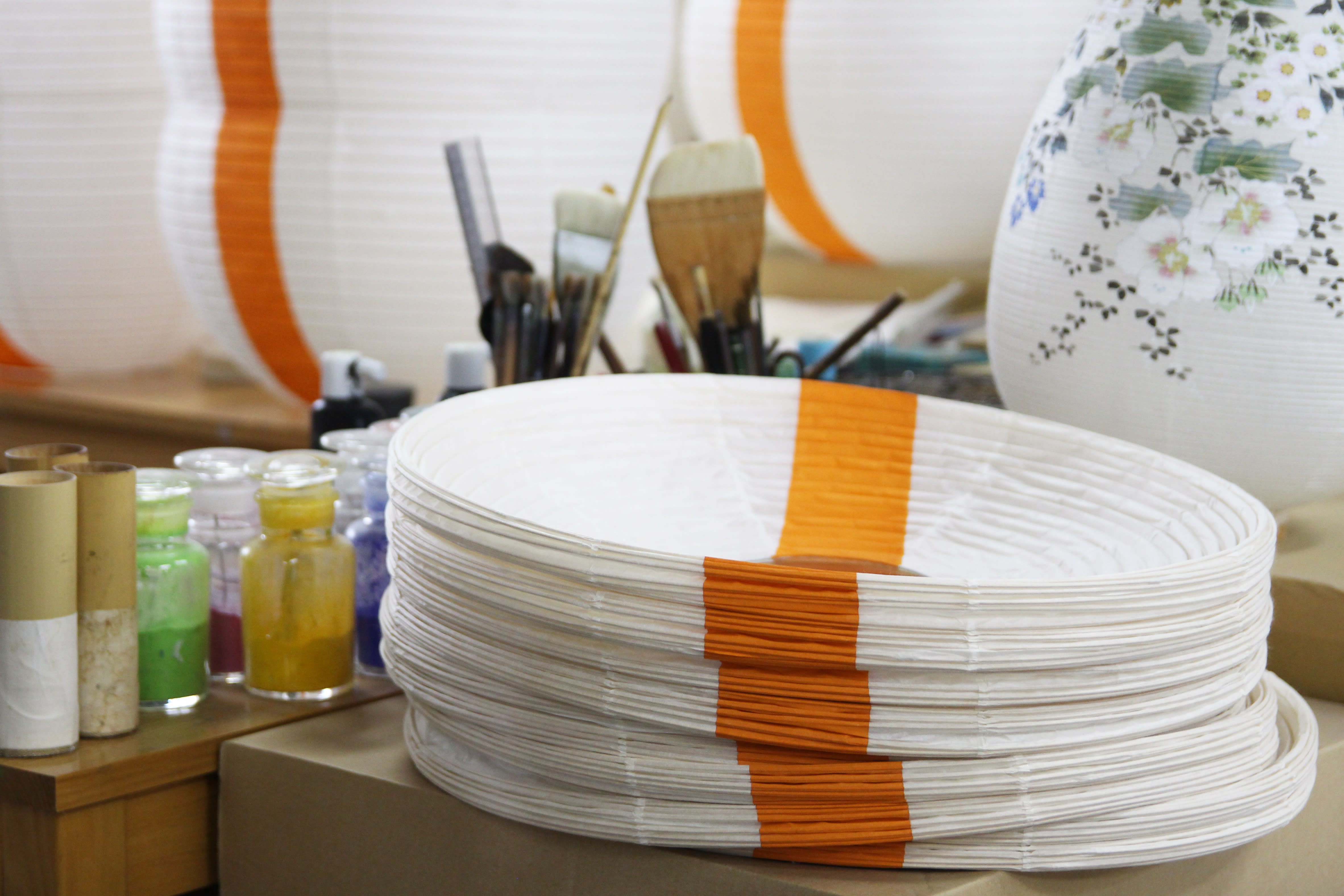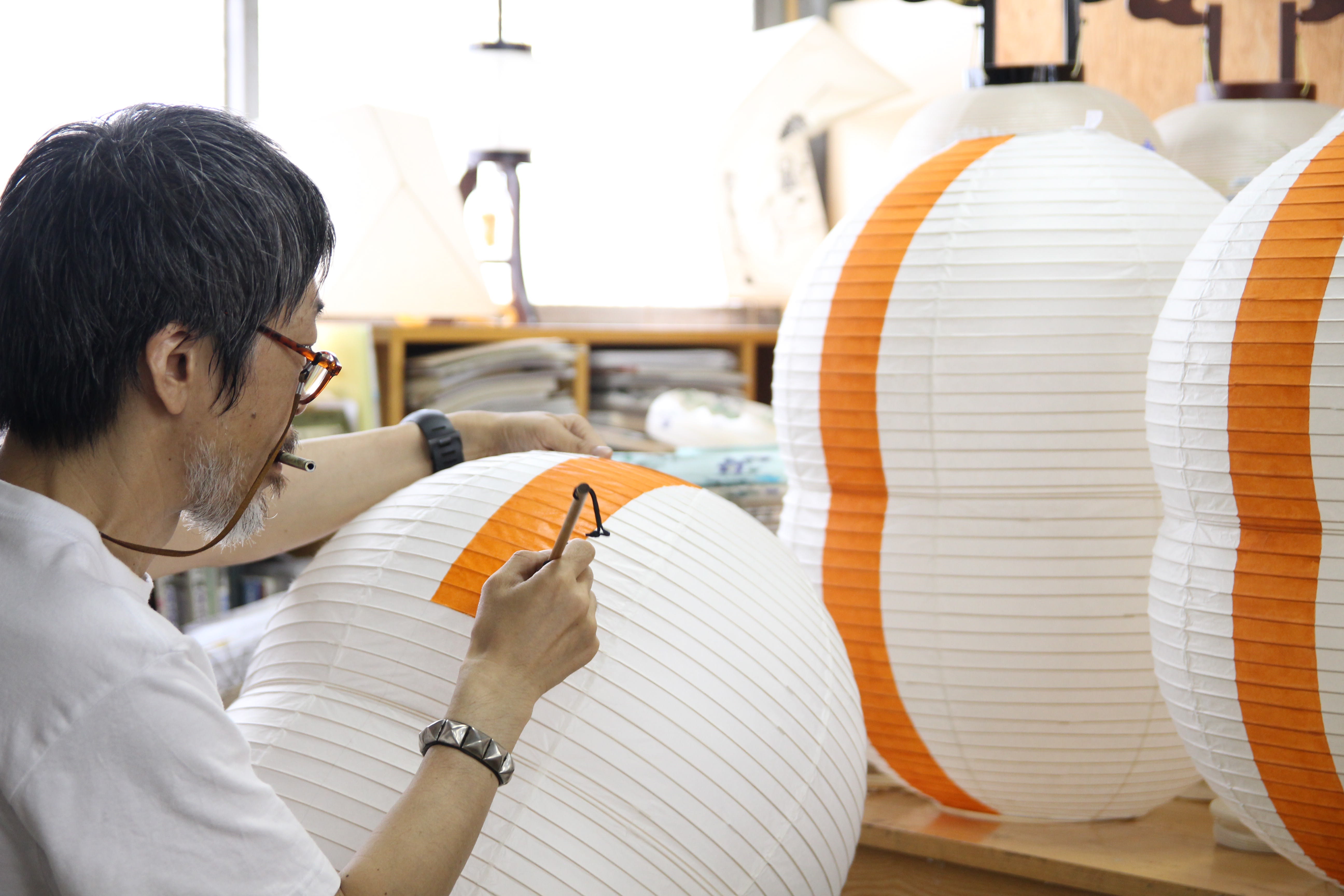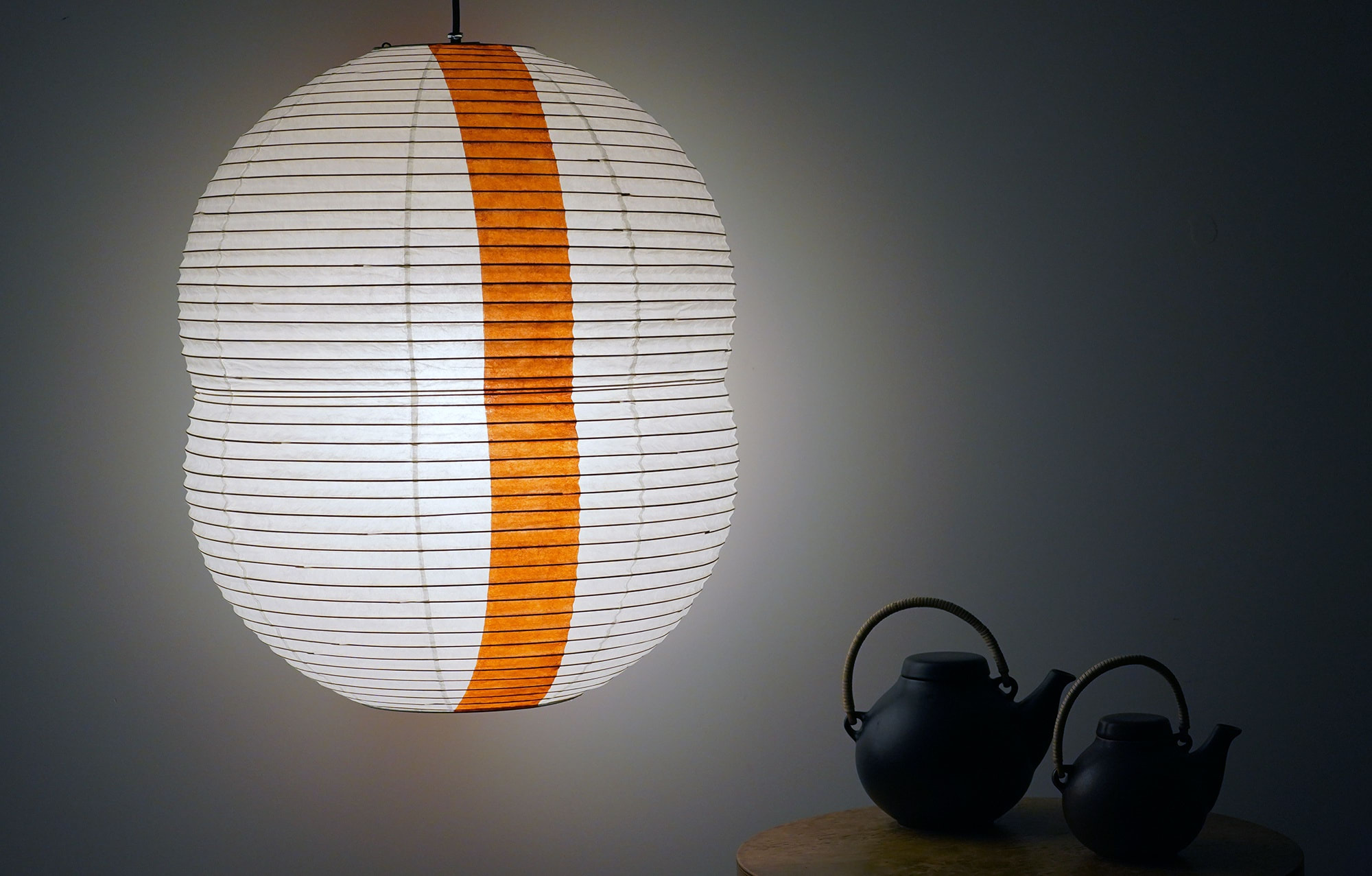-
The collaboration with Barber Osgerby stretches back to 1996 when Chris McCourt of Windmill (Isokon) introduced twentytwentyone to the design for the Loop table. Loop became a shop regular and was spotted by the Metropolitan Museum of Art, subsequently entering their collection.
Barber Osgerby created an early iteration of the Upper Street store design, and we have worked together on several special editions, charitable projects and commercial interiors.
As their product design portfolio expanded, twentytwentyone have readily embraced the sensitive and thoughtful approach that typifies their work.
The partnership to produce and distribute the Hotaru range began in 2015, launching at the London Design Festival with the Buoy and Double Bubble designs. The collection is manufactured by Ozeki & Co Ltd, the celebrated Japanese company dedicated to making paper lanterns since 1891.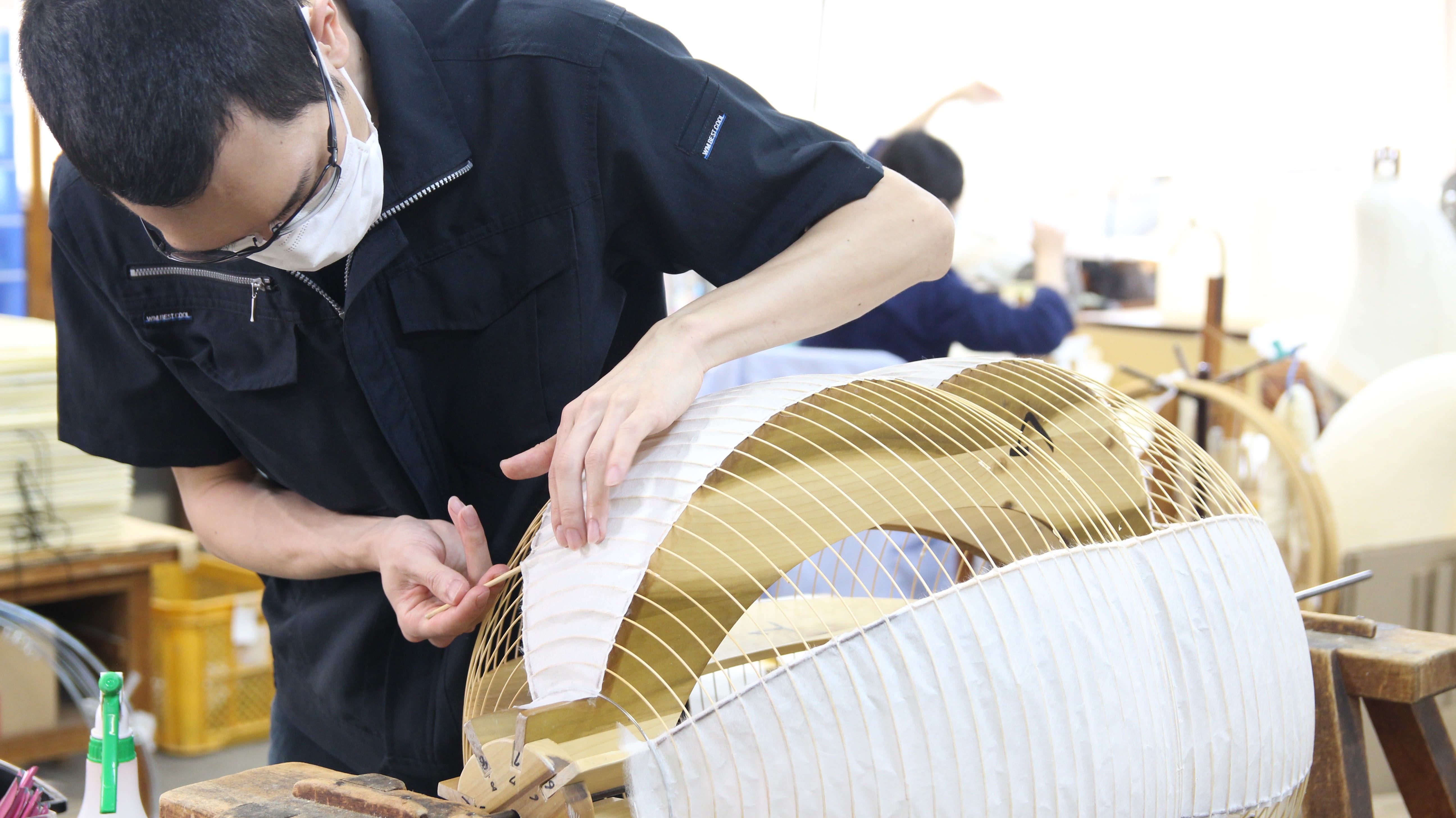
The Hotaru collection is carefully made by hand in the renowned Ozeki & Co workshops in Japan © Ozeki & Co
Named after the Japanese word for ‘firefly’, the Hotaru lighting collection draws on the heritage of Japanese lantern making. Constructed using traditional techniques, stretching translucent Mulberry-bark washi paper over a bamboo structure, the lighting range elegantly fuses traditional craft with contemporary design.
The family of hand-made lanterns has grown and diversified with floor and table versions. The collection has found favour in commercial and residential interiors across the world."We've been partnering with Ozeki and twentytwentyone for many years. We were honoured to be invited to participate in the celebration of twentytwentyone's 25th anniversary and to create a special limited edition of the Hotaru Double Bubble."
- Edward Barber and Jay Osgerby
To coincide with the launch of a limited edition of 25 hand-painted lanterns to celebrate the twentytwentyone anniversary, we caught up with Edward Barber to share some insight into their thoughts and methodology toward design.
Anniversary Edition Double Bubble as a table lamp, Barber Osgerby © twentytwentyone
-
Process
Discover the meditative production process of the anniversary Hotaru in the following short film:
-
Q+A
2021 Double Bubble has proved to be a difficult shape to add pattern to. Was this anticipated and how did you reach the design we will launch?
Edward Barber There is a long tradition of decorating lanterns in Japan. Hand-painted lanterns are seen everywhere, homes, temples, restaurants, both inside and outside. On frequent trips to Japan, I have often admired these lanterns, especially the ones with calligraphy on them. Outside a Shinto temple, I spotted some lanterns with red vertical stripes with calligraphy between them and thought that this could be a good starting point for our new hand-painted design. Finding a design that worked well with the double bubble shape was hard as the form of the Lantern is so pure that everything seemed to detract from the shape. The great thing about the simple vertical stripe is that it does the opposite and accentuates the double curves.
Traditional Japanese lanterns outside a Shinto temple.
2021 What are the challenges in developing new designs for the Hotaru collection? (spoiler alert - the work is underway)
Edward Barber There are multiple challenges, but the main one is the difficulty in transporting the lanterns. The mulberry paper, whilst flexible, is relatively fragile and so the lanterns must be shipped flat in a box to prevent damage. This puts many constraints on the design as the internal framework must not damage the paper in transit. The most efficient shapes are based on circular designs using a continuous bamboo wire. As this is the most common type of lantern in Japan, it is hard to find a design that hasn’t already been done! That’s why the double bubble is my particular favourite. It is very close in shape to the most simple circular lanterns but with a small intervention, it has become a very recognisable and distinct design.Anniversary Edition Double Bubble in the Ozeki & Co workshop © Ozeki & Co
2021 Do you work from sketches, models and then CAD?
Edward Barber It’s exactly as you say. We start with sketches and quickly move to full-scale paper models that we hang all over the studio. Changes are then made or designs scrapped until we get to something we like. The designs are put into CAD and sent to Japan. The prototypes are pretty quick, except in the run-up to the lantern season in August when Ozeki are completely flat out. The designs come alive in the real materials, and we rarely need to make significant modifications.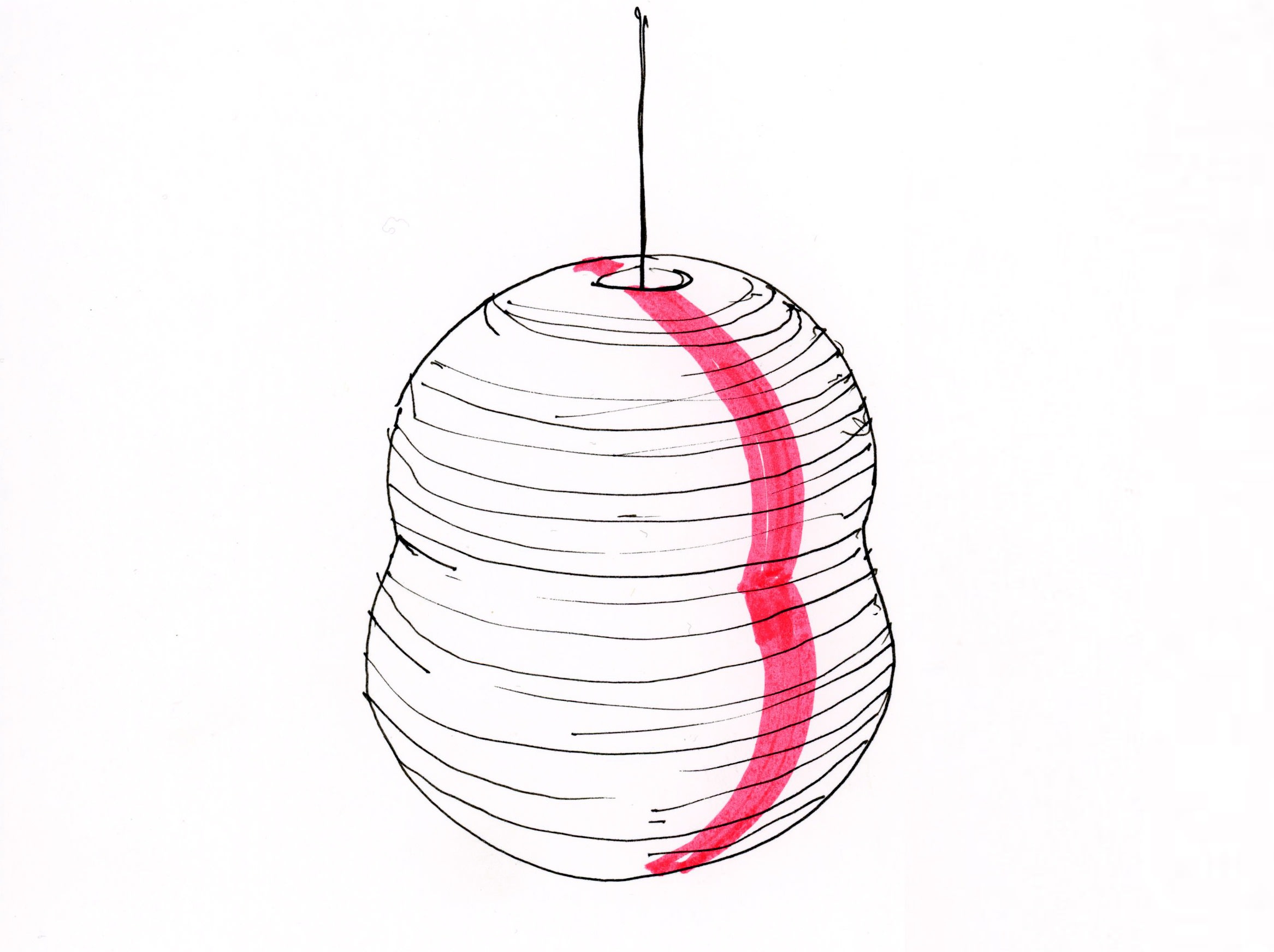
Double Bubble sketch © Barber Osgerby Studio

Double Bubble design tests © Barber Osgerby Studio
2021 Working with Ozeki in Japan is a privilege. The quality of both materials and craftsmanship is exemplary.
Does working with a handmade design differ to how you approach the more industrially produced?
Edward Barber I’m not sure it does, really. We design in the same way for mass production and batch production. The difference lies in the end product because a hand-crafted object has another layer beyond what an industrial product can have. Its individuality and slight discrepancies between pieces due to the hand of the maker all add to the final character.The meticulous hand painting of the Hotaru Anniversary Edition at the Ozeki & Co workshop © Ozeki & Co
2021 It's impossible to avoid the subject of Isamu Noguchi’s Akari collection – they are, in fact, made in the same workshops – how do you approach individuality and create your own personality for Hotaru in context of Noguchi’s legacy?
Edward Barber Yes, that is an interesting point. Some people might question why we even work on new lantern designs when Noguchi produced somewhere near 200 different shapes. But I think you could level the same argument about wooden chairs or ceramics. Thousands of designs exist but still, there are opportunities for exploration, and in some cases innovation. After all, it was Noguchi’s designs that lead me to the Ozeki factory nearly 10 years ago whilst travelling in Japan. I was so enchanted by the forms and craftsmanship of the Akari collection that I wanted to see how they were made for myself. There are times when we are working on new designs that we wonder if Noguchi had already done it before but Ozeki have the archive and can point out if we stray too close. Sometimes this is a challenge in itself!2021 The longevity of your designs is clearly a key element in your philosophy, and virtually all your work continues to be commercially produced. What other criteria are important to you around the subject of sustainability and responsibility?
Edward Barber Partnering with the right manufacturers is a critical element in being a sustainable design studio.
We have chosen to work with a small group of manufacturers who are able to produce high-quality products that have been properly tested and are fit for purpose. These companies see authenticity in design as a key ingredient and that helps to produce a long-lasting product.Anniversary Edition Double Bubble as a pendant lamp, Barber Osgerby © twentytwentyone
2021 Given the opportunity to choose a design brief, what would it be?
Edward Barber Designing a bridge would be a fascinating project.
2021 And finally, you’re on a desert island, and you can have three designs to enhance your life on this tropical island; what would they be?
Edward Barber A Santoku multipurpose knife for preparing whatever I can find to eat and construction of boat and shelter.
Prouvé Cité chair as it’s so comfortable for watching the sunset and will be possible to repair when the canvas wears out (with woven palm fronds, no doubt).
A cast-iron Sori Yanagi casserole for cooking and collecting water. -
Craftsmanship
Deftly hand-painted by highly skilled artisans to create the exacting verticle stripe.
Hand-painted, small Double Bubble lantern in a limited edition of 25 is now available at twentytwentyone from £495.
-
Hotaru Anniversary Edition, 2021
Limited edition of 25
Pendant £495
-
Hotaru Anniversary Edition, 2021
Limited edition of 25
Table Light £875

